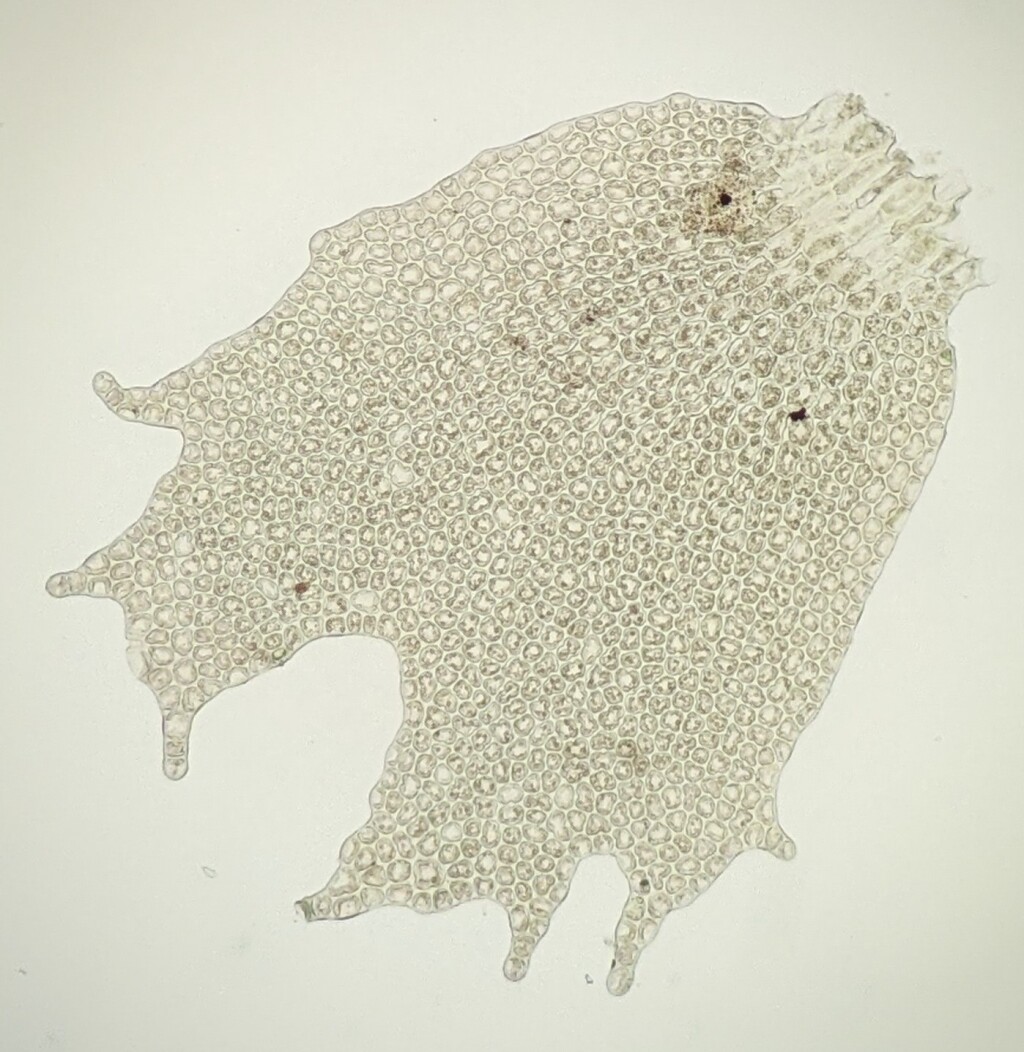Frullania monocera
(Hook.f. & Taylor) GottscheEpiphytic or lithophytic, brown to olive-green. Stems irregularly pinnately branched. Mid stem and branch lateral leaf lobes oblong-elliptic, 0.7–1.2 mm long, 0.55–1 mm wide, broadly obtuse to subtruncate at apex, not angled away from substrate when moist, imbricate; cells oblong at base, rounded-quadrate, irregular or circular elsewhere, 10–20 µm long and 5–15 µm wide at margin, 15–38 µm long and 13–20 µm wide near centre, 30–68 µm long and 20–45 µm wide toward base, with trigones throughout, particularly prominent at base, with intermediate thickenings most frequently from centre to margins. Lobules falcate with longest axis diverging from stem, 0.3–0.53 mm long, 0.2–0.5 mm wide, spinose at apex; cells 13–20 µm long, 6–15 µm wide, irregular, with prominent trigones and intermediate thickenings throughout. Stylus 3 cells long, 2 cells wide at base. Underleaves cuneate to obovate in outline, bifid to 2/5–1/2 of length, with a few spinose teeth along margins, 0.47–0.75 mm long, 0.4–0.83 mm wide, flat, with lobe apices pointing forwards; sinus acute; cells irregular, 10–38 µm long, 10–25 µm wide, smallest toward margins, with trigones and intermediate thickenings throughout. Perianth clavate-cylindric, 4-keeled, 1.8–2 mm long, 0.84–1 mm wide, truncate at apex, with a beak, covered with elongate tubercles; keels crenate.
GipP, GGr, EGL, EGU, WPro, HSF, VAlp. Mostly from wet forest in East Gippsland, but also recorded from the Grampians and the Yarra Ranges. Also QLD, NSW, Tas, New Zealand and New Caledonia.
Frullania monocera and F. spinigastria S.Hatt. are distinct among Victorian species in having underleaves with multiple spinose teeth along the margins and perianths covered by tubercles. This latter character distinguishes them from F. clavata (Hook.f. & Taylor) Gottsche which can sometimes resemble these species when the underleaves have toothed margins. In these forms of F. clavata the lobes of at least some of the underleaves point toward each other resembling pincers, whereas the lobe apices in F. monocera and F. spinigastria point forwards. Frullania spinigastria is very similar to F. monocera and seems to be mainly distinguished from F. monocera by its more orbicular underleaf outline.
 Spinning
Spinning